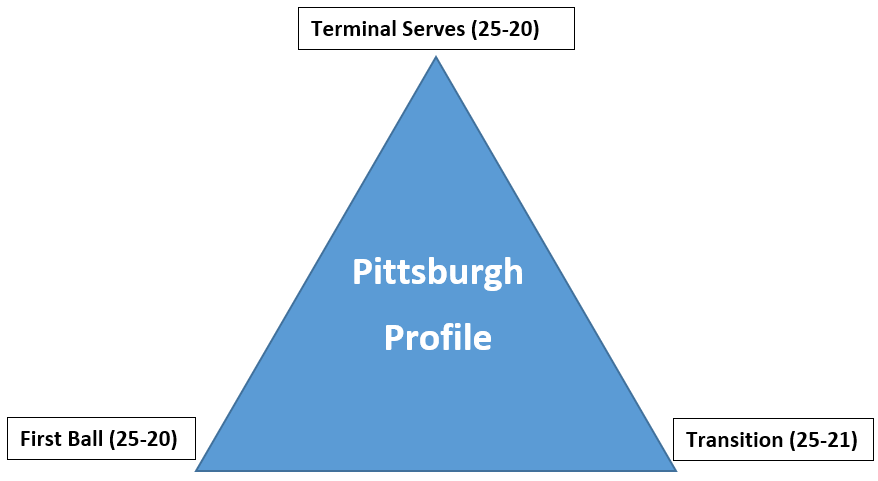I’ve spent a lot of time on this blog talking about the Triangle analysis framework. I talked about Terminal Serving and First Ball in more depth, and next weekend I’ll lay out some more information about the Transition element. In these posts I’ve made the case that we want to move from descriptive analysis to prescriptive analysis. From, “what happened?” to “how can we act on that information?”
So, with the NCAA Women’s Final Four tonight, I wanted to run these four teams through the Triangle filter and see if it offers any predictive insight for how these matches will turn out. I try to keep my posts to a 10-minute read or less, so I’m splitting them into two parts. I previewed the other semifinal here.
Hey everybody, I have Pitt’s profile above the paywall, with the rest of this post reserved for premium subscribers. Consider subscribing if you’re enjoying this and want to see more analysis. As a bonus, I’m going to have a subscriber-only Watch Party for the Championship on Saturday. Join me and other Smarter Volley enthusiasts for commentary that goes deeper than, “hitting percentage is sort of like batting average,” (to be fair, it kind of is…) and without needing to be told for the 100th time that the teams play to 25 points and the player wearing the different color jersey is called the libero. (Something worth remembering… the announcers know this too. This is stuff that’s coming from the producers. Let ESPN know that you’re not a random person who stumbled upon a volleyball match for the first time; you’re a volleyball fan who knows this stuff!)
Pittsburgh
Let’s go right to their Triangle profile.
Pitt is good in all 3 areas of the game. They had a strong point margin in every area. Louisville and Pitt are the two more balanced teams in the Final Four, whereas Wisconsin and Nebraska have a bit more strength/weakness distribution.
But how does Pitt go about being effective in these 3 areas?
Their serving game is more conservative than I would have thought, given coach Dan Fisher’s overall philosophy, which is an aggressive one. They are serving in at almost 92%. Their ace % is 5.8%, which is good, but not exceptional. So this is a team that’s going to make the other team play from the service line.
Let’s look at some passing comparisons:
When it comes to passing, we see that Pitt and Nebraska are both what I’d call “balanced” passing teams. I consider “pass accurately” and “don’t get aced” to be two related, but slightly distinct, skills. Louisville is relatively less accurate of a passing team, compared to how good they are at not giving up aces. Wisconsin gives up more aces than expected, given how accurate their passing is.
Pitt and Nebraska aren’t relatively better or worse at passing accurately or avoiding aces. Nebraska is overall the better passing team (maybe the best in the country) but Pitt is good there as well.
So Pitt is going to be a solid passing team and they are going to serve the ball in. Among the teams in the Final Four, they also allowed the highest attacking %. So how did they earn their way here?
Pitt has the highest FBSO1 of the teams in the Final Four. They are also more aggressive than the average team. Teams that are above the trendline have relatively more errors and teams above the trendline have relatively few errors. So Nebraska (the lower of the pair of them and Wisconsin) is a bit more conservative and less terminal offensively, while Pitt is relatively more terminal and a bit more aggressive.
Now that’s a Dan Fisher team.
So we have a tough combination to beat. Pitt is good in the serve-pass game and they are very terminal, especially in First Ball. So how does Nebraska profile?
Keep reading with a 7-day free trial
Subscribe to Smarter Volley by Joe Trinsey to keep reading this post and get 7 days of free access to the full post archives.





